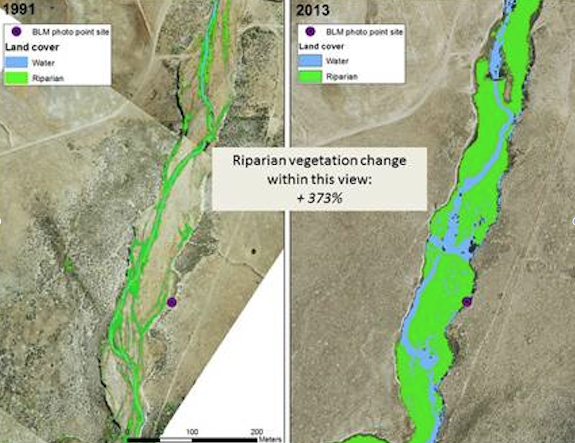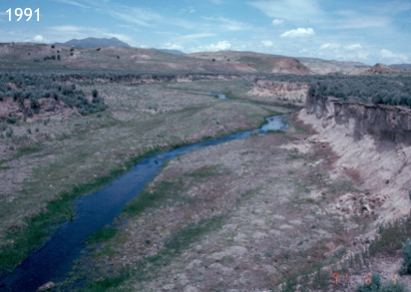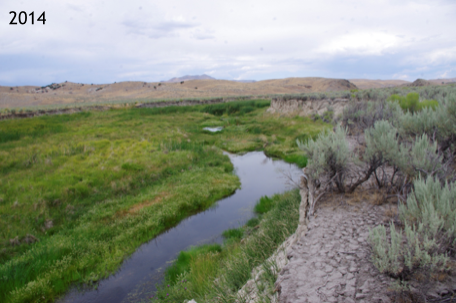Lahontan cutthroat trout could one day be reintroduced into waters like Susie Creek in Nevada, where restoration work involves keeping cows from “parking” in the water.
by Helen Neville
Cattle reign supreme in the West, valued by many as an iconic part of this landscape and an important thread of western social culture.
But without proper management, cattle can cause problems for trout. In northern Nevada, for instance, grazing affects over 95 percent of habitat occupied by Lahontan cutthroat trout conservation populations (those being managed for recovery under the Endangered Species Act), and habitat loss is one of the causes of this unique trout’s decline.
When it’s hot cows go to water, and this has caused many of Nevada’s streams to become wider, shallower, and warmer as stream-side vegetation was trampled and willows which once shaded the stream could no longer grow; in some streams nary a stitch of green can be seen. For many who grew up here, this is their ‘baseline’ for healthy streams. As one ranching partner mentions, “I rode horseback all over northern Nevada in the 70s, and I thought this is just what a stream looked like.”
But peppered across this harsh desert landscape are a handful of collaborations among foresighted ranchers and management agencies like the Bureau of Land Management (BLM), where more strategic grazing practices are improving stream habitat – and Trout Unlimited is helping to document these benefits. Screen Shot 2015-02-09 at 12.52.14 PM.png



It takes a lot of work, but changing the length and timing of the cattle’s stay on different pastures, along with a little fencing here and there, can be enough to give riparian vegetation a foothold. The results can be dramatic, as is obvious in before-after photographs at BLM monitoring sites on the ground, and as quantified at broad scales by Trout Unlimited’s GIS analysis of aerial photographs and satellite imagery (above).
Susie Creek, which once supported Lahontan cutthroat trout, is a perfect example. Ranchers, in cooperation with BLM and other partners, began changing their grazing practices here in the 1990s, moving or excluding cattle from riparian areas so they didn’t just park in the streams. This effort has clearly paid off: TU’s imagery analysis of one stretch of Susie Creek shows improved grazing strategies have increased riparian vegetation by 373 percent, and have also led to more water storage. This is not only good for trout, which one day may be reintroduced to Susie Creek, but also for other wildlife of concern like spotted frogs and sage grouse, as well as the ranches’ bottom lines.
Perhaps most importantly, this work showcases the benefits of collaborations among landowners, land managers, and NGOs like Trout Unlimited. We’re working hard to share stories of how our partnerships can improve habitat and water security.
And a picture is worth a thousand words.
Helen Neville is a senior scientist with TU. She works from Boise, Idaho.


